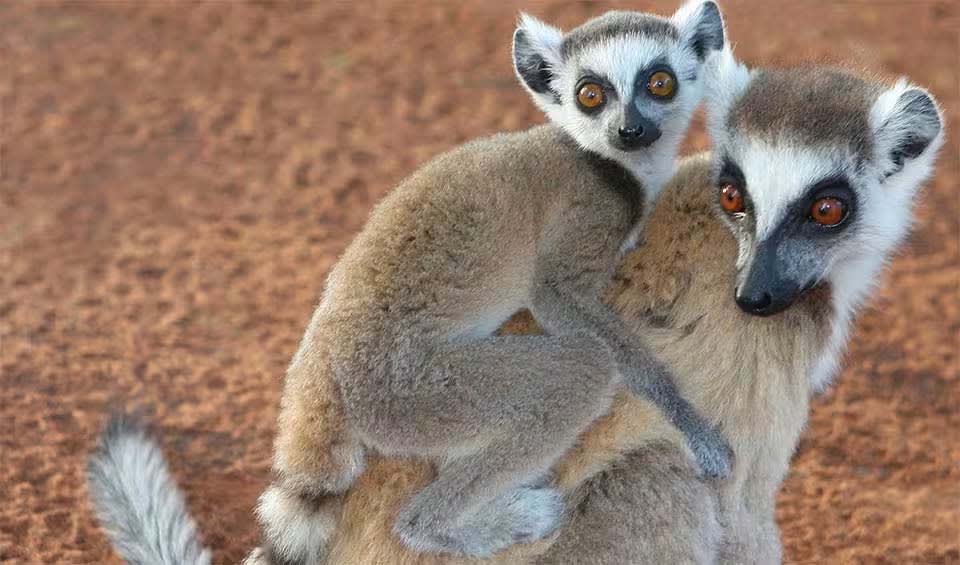Lemuridae – True lemurs
Matriarchal ‘creators of the forest’
Endemic to the enchanting island of Madagascar, lemurs embody a wide array of evolutionary adaptations that have allowed them to thrive in diverse ecological niches. Characterized by their long, fluffy tails—which often surpass the length of their bodies—pointed snouts and large, expressive eyes, lemurs are not only iconic representatives of Madagascar’s unique biodiversity but also critical components of the island’s ecological balance.
Lemurs are among the most social of all primates, exhibiting complex, predominantly matriarchal social structures. Female dominance within lemur societies is remarkable, setting them apart from most other mammalian species. In these matriarchal systems, females lead the group and play crucial roles in decision-making processes, including territory selection and defense. This female-led hierarchy ensures access to the best resources for females and their offspring, thereby optimizing the survival and reproductive success of the group.
The role of lemurs as seed and pollen dispersers cannot be overstated. Their dietary preferences for fruits and flowers make them vital agents in the regeneration and expansion of Madagascar’s forests. By consuming fruit and transporting seeds across vast distances, lemurs facilitate the growth of new plants and contribute to the health and diversity of their habitats. This symbiotic relationship between lemurs and their environment underscores their nickname as the “creators of the forest.”
Despite their ecological importance, lemurs are considered the world’s most endangered group of mammals. The primary threat to their survival is habitat destruction, driven by deforestation, agricultural expansion, and illegal logging. Madagascar’s rapid environmental degradation poses an existential threat to lemurs, with many species facing the brink of extinction.
Genera in this family
The only primates found outside of Africa and Asia, as they are native exclusively to the island of Madagascar
Has a special way to break down the tough bamboo, something other animals can’t do
Known for their distinctive ruffs of fur around their necks, which give them their name
Highly recognizable lemur due to its black and white ringed tail





